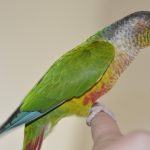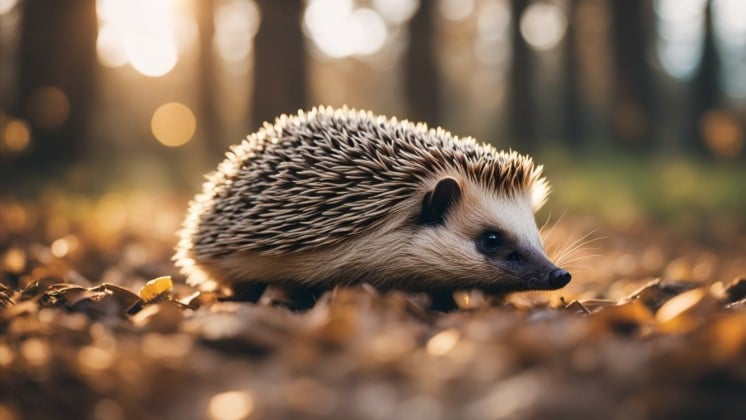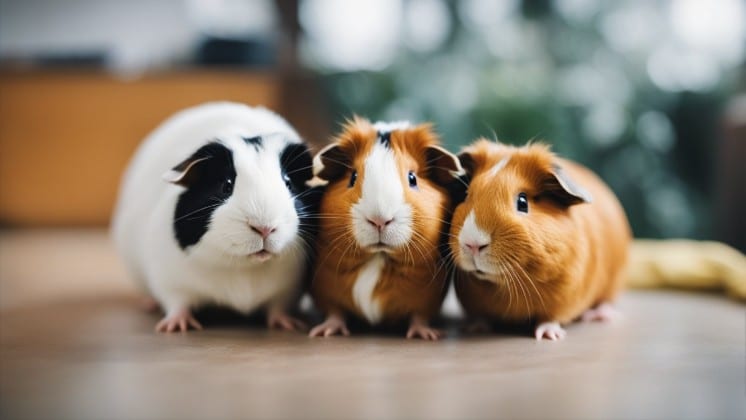Chinchillas are adorable and playful creatures that make great pets. As part of their grooming routine, chinchillas need to take dust baths to keep their fur clean and healthy. However, not just any type of dust will do. Chinchillas require a special type of sand, known as chinchilla bath sand, to keep their coats in top condition.
In this article, we’ll explore what chinchilla bath sand is, how to use it, and why it’s essential for your pet’s well-being. So, if you’re ready, let’s get started!
What is chinchilla bath sand?
Chinchilla bath sand is a special type of sand that is used to provide chinchillas with a dust bath.
Unlike regular sand, chinchilla bath sand is specifically formulated to remove excess oils and moisture from a chinchilla’s fur. Chinchilla dust baths are an essential part of a chinchilla’s grooming routine.
In the wild, chinchillas roll in volcanic ash to keep their fur clean and healthy. In captivity, chinchilla dust baths provide a similar function. By rolling around in the sand, chinchillas can remove dirt, oil, and other debris from their fur.
Chinchillas should be given access to a dust bath at least once a week. However, some chinchillas may require more frequent baths, especially if they have particularly oily fur. It’s important to monitor your chinchilla’s fur and behavior to determine how often they need a dust bath.
Can you bathe chinchillas?
Chinchillas are delightful pets to own, but how do you keep them clean? Can you bathe chinchillas? Yes! But not with water.
Chinchillas need a regular dust bath to maintain their luxurious coat, and traditional chinchilla dust is the material of choice for most owners. However, there is now an alternative: chinchilla bath sand.
This revolutionary idea uses 100 percent natural volcanic mountain pumice in place of traditional dust. It is ideal for keeping your pet’s fur soft and shiny, even during humid weather when traditional dust baths can be difficult to manage.
Plus, it takes only 5-10 minutes per session, much less time than the preparation needed for a traditional dust bath.
Kaytee Chinchilla Bath Sand or Super Pet Chinchilla Bath House are excellent products that provide your pet with all the benefits of bathing without the hassle or mess of a water bath.
How do you clean chinchillas?
Cleaning chinchillas can be daunting, but it is an essential part of caring for these animals. To clean your pet chinchilla, remove the old bedding and bathe your chinchilla with lukewarm water.
After bathing, use a soft brush to remove any excess fur. Finally, replace the bedding with new clean material. So, it isin’t that difficult to keep your chinchilla clean.
How often should you bathe your chinchilla?
Chinchillas are typically clean animals and do not need regular baths. However, giving them a dust bath every week or two is important to keep their coat shiny and healthy.
Chinchillas have evolved from wild relatives that enjoy bathing in volcanic ash and sand, so it is essential to replicate this natural behavior.
Chinchilla dust works fine, but as we mentioned earlier, there is a better alternative: the natural volcanic pumice, which helps keep your pet’s skin sensitive while providing all the benefits of a traditional dust bath without the hassle or mess.
To use, place your chinchilla in a safe area such as a Kaytee Chinchilla Bath House or Super Pet Chinchilla Bath House and let them enjoy the luxurious pumice sand for 5-10 minutes per session. This will help ensure they stay clean and their coat stays shiny!
Why do chinchillas need dust baths?
Chinchillas need to take regular dust baths in order to keep their skin and fur healthy. In the wild, chinchillas would naturally bathe in volcanic ash or sand to keep themselves clean.
This natural behavior is important for their health and well-being, as it helps remove dirt, grease, and excess oils from their coat. Dust baths help maintain a lush coat and can even help prevent common skin conditions like dandruff.
Furthermore, dust baths are especially helpful in humid weather since they help absorb moisture from the air.
Read also: Chinchilla Sand Alternatives (Easy Checklist)
How often do chinchillas need a dust bath?
Generally, chinchillas need dust baths at least two to three times a week. However, the frequency may vary depending on the humidity and cleanliness of their environment. It’s essential to monitor your chinchilla’s fur and skin regularly and adjust their dust bath frequency as necessary.
Pro tip: Avoid letting your chinchilla have more than the required dust baths. Over-bathing can lead to dry skin, so it is important to limit the bath time, and if the dryness persists, contact your local vet.
What is chinchilla dust made of?
Chinchillas have a unique bathing ritual that involves dust baths. The dust used in these baths is specially formulated to meet the needs of chinchillas.
Chinchilla dust is essentially very fine clay particles made of volcanic ash. The chinchilla dust is used as a primary source of cleanliness and comfort by chinchillas and helps keep their coats clean and coat dry to prevent mold and mildew.
That is why chinchillas need dust baths because their fur is so dense that it can trap dirt and oils.
How long can a chinchilla go without a dust bath?
Chinchillas are usually recommended to get a full dust bath at least twice a week, although they can go up to ten days without one.
A dust bath helps maintain their fur and keep them healthy by removing excess oils, skin flakes, and dirt.
A proper dust bath should last around 10 minutes for a chinchilla to truly enjoy the experience and come away fully clean; you should never skimp on your time in the dust.
If your chinchilla does not seem to be taking regular dust baths, purchasing additional bowls or containers is best to give them an added incentive.
Can you reuse chinchilla dust?
Yes, you can reuse chinchilla dust. Chinchilla dust is desert-grade clay that has a fine texture and absorbs oils and other liquids well. It can be used multiple times after shaking out the excess dirt, overflowing urine, or clumped waste pellets.
To reduce mess, fill reusable containers such as paper bags with chinchilla dust so the animals can use them comfortably. Also, owners should replace old chinchilla dust with fresh ones every few weeks to ensure the dust remains clean from clumps and dander.
How long does a chinchilla need to bathe?
Typically chinchillas should bathe for three to five minutes per session. The sand in a chinchilla bathhouse should be about 2 inches deep so the chinchilla can move around and get fully covered with dust.
That said, some chinchillas may require longer or shorter bath times, depending on their individual needs. Be sure to observe your chinchilla during the bath and adjust the duration as needed.
How do chinchillas bathe in the wild?
In the wild, chinchillas bathe in volcanic dust as a type of self-cleaning ritual. Chinchillas will find sources of dust and roll around in it, absorbing its minerals and oils from the earth.
The dust will help keep them clean by absorbing excess sebum produced through their skin, balance pH levels to fight bacteria and fungus, provide protection from pests and parasites, and give shine to their coat.
This bathing ritual also helps chinchillas socialize with other chinchillas; they may groom each other or rub their faces and bodies against the dust.
Can you bathe chinchilla in the water?
No, it is not recommended to bathe chinchillas in water as this could cause a number of health problems. Chinchillas have sensitive skin and a heavy coat that can easily become matted if wet.
Dust baths provide an effective way of cleaning and grooming that keeps your pet cool and comfortable, so water baths should be avoided.
3. Benefits of using chinchilla bath sand
As we’ve discussed in the previous paragraphs, chinchillas are pets that require special care, including regular dust baths. So, let’s look at some of the benefits of using this dust sand for chinchillas.
1 . Helps keep chinchillas clean
Chinchillas are naturally clean animals, but they do need help keeping their fur in top condition. Using chinchilla bath sand is an excellent way to help them do this. The sand helps to remove dirt, dust, and excess oils from their fur, leaving it looking and feeling soft and clean.
It is recommended that chinchillas take a dust bath two-three times per week. This helps to keep their fur in top condition and prevents matting and tangling.
2. Prevents skin irritation
Chinchillas have delicate skin that is prone to irritation and infection. Using chinchilla bath sand helps to prevent these problems by removing excess oils and dirt from their fur. This helps to keep their skin clean and healthy, reducing the risk of irritation and infection.
It is important to note that chinchillas should never be bathed in water. Their dense fur traps moisture, which can lead to fungal infections and other skin problems. Using chinchilla bath sand is a safe and effective way to keep your chinchilla clean and healthy.
3. Provides mental stimulation
Chinchillas are active animals that require mental stimulation to stay healthy and happy. Using chinchilla bath sand provides them with an opportunity to engage in natural behaviors, such as digging and rolling.
Chinchillas enjoy using their paws to dig and burrow in the sand, which provides them with mental stimulation and exercise. Rolling in the sand is also a natural behavior that helps to keep their fur clean and healthy.
How do you use chinchilla bath sand?
One of the critical aspects of their care is providing them with a chinchilla bath sand. Chinchillas love to roll around and clean themselves in the sand, which helps to remove excess oils and dirt from their fur.
To use chinchilla bath sand, you should fill a shallow container with the sand and place it in the cage. Allow your chinchilla to roll around in the sand for 10-15 minutes, then remove the container from the cage.
Note: Changing the sand regularly, at least once a week, is essential to ensure it remains clean.
Choosing the right type of chinchilla bath sand
When it comes to chinchilla bath sand, not all brands are good enough to provide chinchillas with good quality sand.
Therefore, choose a high-quality chinchilla bath sand that is specifically designed for chinchillas. Look for brands that are made from 100% natural volcanic ash or pumice, as these materials are safe and effective for chinchilla dust baths.
Preparing the chinchilla bath sand
Before introducing your chinchilla to the bath sand, it’s important to prepare it properly:
- Make sure you have a suitable container for the bath that is large enough for your chinchilla to roll around in.
- Pour a generous amount of chinchilla bath sand into the container, making sure it’s deep enough for your chinchilla to fully submerge itself.
- Sift the sand to remove any debris or clumps that may be present.
Introducing your chinchilla to the bath sand
When introducing your chinchilla to the bath sand, it’s essential to do so in a calm and controlled manner. Place the container of bath sand in your chinchilla’s cage and allow it to approach the sand on its own.
Chinchillas are naturally curious animals and will likely begin exploring the sand independently.
3. Safety precautions when using chinchilla bath sand
We all know that our pets are like babies to us. Therefore, when using chinchilla bath sand, you should take extra safety precautions.
1. Avoiding overuse
Chinchillas need to take dust baths to keep their fur clean and healthy. However, too much of a good thing can be harmful. Overuse of chinchilla bath sand can lead to dry skin and fur, which can cause itching and irritation. To avoid overuse, limit your chinchilla dust baths to no more than twice a week. If you notice any signs of dryness or irritation, reduce the frequency of dust baths even further.
2. Keeping the bath area clean
Keep the area where your chinchilla takes its dust bath clean. This helps prevent the buildup of bacteria and other harmful substances that can cause health problems. After each use, remove any leftover sand and debris from the bath area. Clean the bath container regularly with soap and water, and let it dry completely before refilling it with fresh sand.
3. Monitoring your chinchilla’s behavior
While chinchillas love taking dust baths, it’s essential to keep an eye on their behavior during and after the bath. Suppose your chinchilla seems agitated or restless during the bath. In that case, it may be a sign that the sand is irritating its skin, as well as if it sneezes excessively or has watery eyes after the bath, it may be a sign that the dust is too fine and irritating its respiratory system.
If you notice any of these signs, stop the bath immediately and consult with a veterinarian.
Summary
Before we move on to the conclusion, we’ve summarized this article into a short list of key points for you to remember:
- Chinchillas originate from an environment with dry, desert-like conditions and have unique needs when it comes to hygiene.
- Chinchilla bath sand is specifically designed to meet the species’ needs and uses 100% natural volcanic pumice.
- Regular dust baths help remove dirt, grease, and excess oils from their coat while also absorbing moisture in humid weather.
Conclusion
In this article, we have explored the unique bathing ritual of chinchillas, including what dust they use and how long they should bathe. We have also discussed some revolutionary alternatives to traditional chinchilla dust, such as Kaytee Chinchilla Bath Sand and Super Pet Chinchilla Bath House.
Want to learn more about chinchillas?
Ready to boost your knowledge to the next level? If so, check out the articles below:
- Chinchillas Smell: 4 Clever Ways to Prevent Odors
- Do Chinchillas Get Along With Birds? (Explained)
- Do Chinchillas Mate For Life? 7 Facts You Should Know





